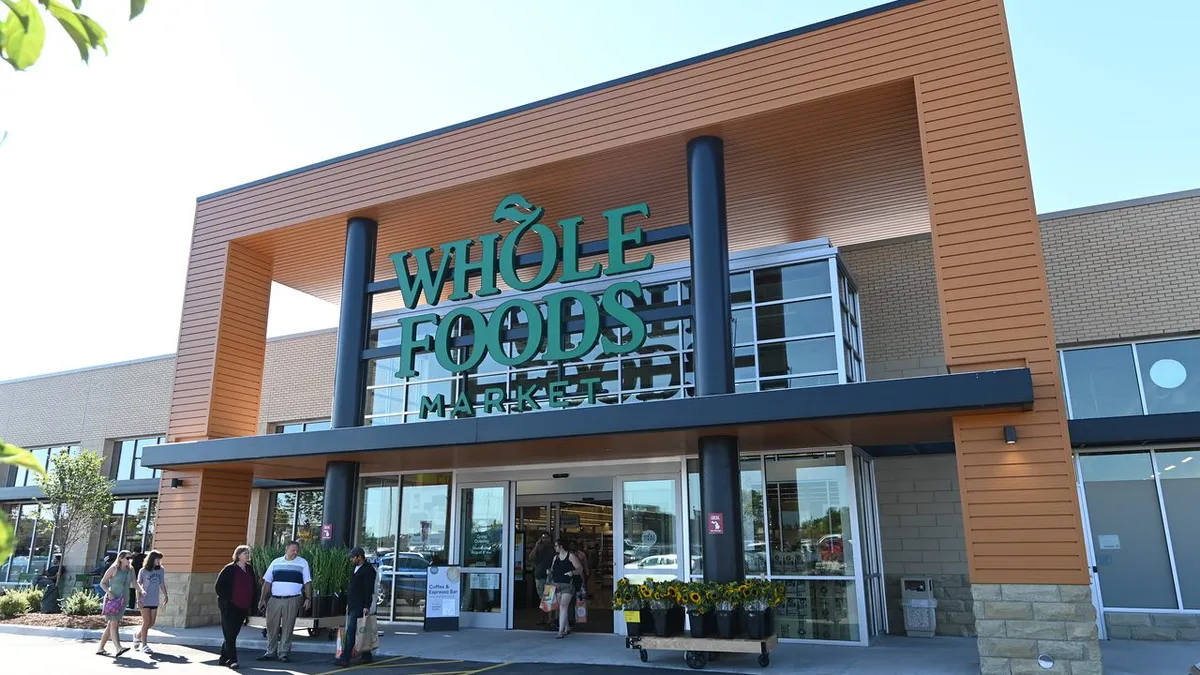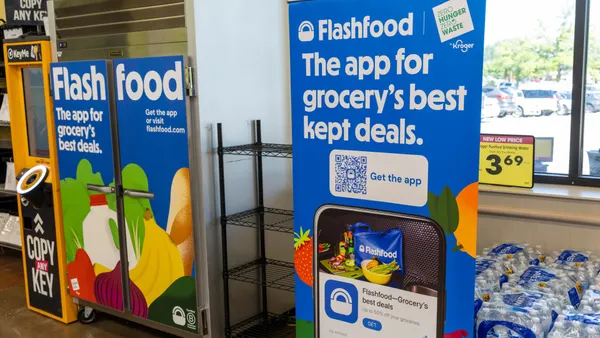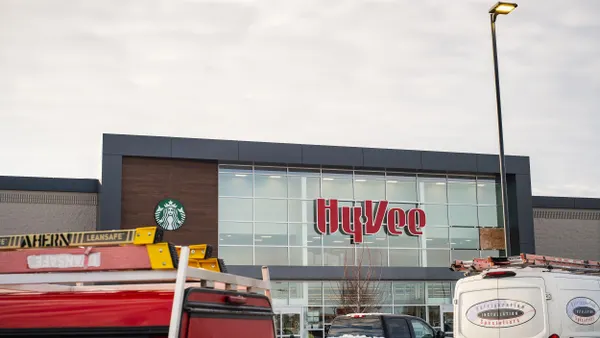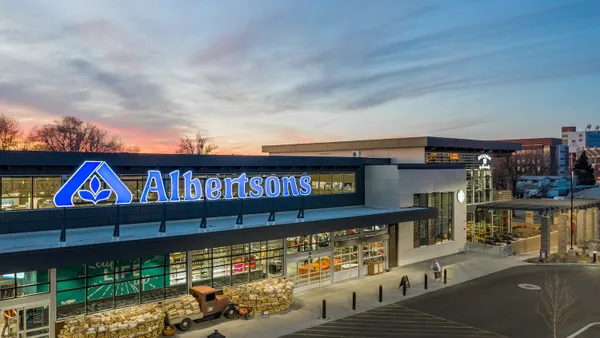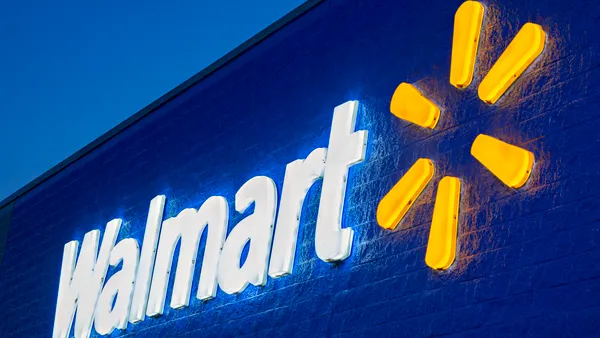After nearly four years as the chief data and technology officer for Kroger’s data arm, 84.51°, Todd James is looking to tap his experience at the grocery company to help make artificial intelligence less daunting for businesses by switching to the consultancy side.
James said he helped Kroger scale its “really strong analytic capability.” Prior to that, he assisted to oversee a zero-to-scale solution at Fidelity Investments, where he built out advanced analytics capabilities for several of the financial services firm’s business units, co-led personalization efforts and oversaw all cross-enterprise AI activities. This combination of experiences makes him well-positioned to problem-solve executives’ AI concerns, James said in an interview.
James, who said he has long had an entrepreneurial spirit and believes now is an ideal time to help companies problem-solve their AI dilemmas, left Kroger and earlier this month launched Aurora Insights. The firm aims to help businesses integrate AI into their operations by addressing what James says are two of the biggest challenges facing executives: being unsure about how to get started with AI and not knowing how to move forward when their company gets stuck along its AI journey.
“My intent is to meet companies where they’re at [and] to bring resources to them that have been there, done that and walked through these types of transitions,” James said.
While some companies view AI as a shiny object, AI cannot have a transformative impact until it’s embedded into business strategy and becomes part of an organization’s culture, James said, noting that business leaders need to look at AI as a tool rather than as a solution alone.
James spoke with Grocery Dive about his experience, why he jumped from Kroger to start Aurora Insights and how he sees AI impacting the grocery industry.
Editor’s note: This interview has been edited for length and clarity.
GROCERY DIVE: What was the impetus for starting Aurora Insights?
TODD JAMES: The timing is right. We’re beyond the experimentation phase with AI, and a lot of companies are stuck there. The market need could be even more acute. A lot of companies understand they need to make this pivot, and they’re looking for support and help. I left a wonderful company, wonderful role, because this is something I’ve always wanted to do.

What would you say are the common misconceptions that you see business leaders grapple with when it comes to AI?
I think one out there is that it’s a bit of a magic wand — that when you implement artificial intelligence, simply by doing use cases and saying that you’re beginning your artificial intelligence journey, that it’s putting you on a path to transformation. I think the misperception is that “If I do an AI initiative, I should be seeing transformative value,” when the companies that are really, really getting ahead are playing a longer-term game. They recognize and understand that AI is about using data to better inform or activate judgment decisions.
Companies that are really getting the value are the ones that are starting to talk about, “How am I restructuring my operations through the use of artificial intelligence to better inform and automate decision points at scale?”
Another misconception is that AI operates on itself. The power of artificial intelligence is when you start with the business problem. You start with the flow of work. You remember that there are people involved. You can see companies that are doing it correctly, but to some extent, I see a lot of companies that have put so much of a mystique that holds AI in such high regard that we’ve kind of forgotten what it takes to really change and reposition a business. We’ve oversimplified it by saying, “I can just AI it,” for lack of a better term.
When you said “Just AI it,” do people actually say that?
I’ve heard that phrase.
My litmus test for a company is if they start by talking about what they’re doing with AI, they’re early in their journey. If they start by talking about customer associate business outcomes and the effect that they’re having for the benefit of whatever group they’re talking to, and then they weave in how AI is having an impact, those organizations are thinking in terms of AI as a tool and how it can be leveraged in combination with other capabilities to be able to drive meaningful outcomes.
Do you foresee companies continuing to build out or create their own data arms in-house, or do you see a trend toward outsourcing to firms that specialize in data analytics?
I think it’s going to be both. I think there are two races going on with AI. One is the race to the new normal, and that is going to be a commoditized capability where hyperscalers come out with a platform with AI in it. It’s not differentiating in capabilities. The only differentiation is how quickly can you adopt these new platforms so that you can move to a new cost curve and a new capability set. You don’t need your own teams to do it because it’s non-differentiating.
The second race, where people can invest in their in-house teams or very strategic relations with vendors, is the race for differentiation. And what that race hinges on is three elements. One element is proprietary data. Two is can you have the data science assets to manage it? Three no one talks about, but it is how quickly can you take your data and the science and operationalize it to change your business through either your own data scientists or a strategic set of partners. For that bucket, I do see in-house teams, because you really don’t want your strategic differentiation to walk outside the door.
I saw on your LinkedIn profile that you directed an “AI factory” capability layer at 84.51°. Tell me more about that.
We built it out as a Kroger-wide platform. Before I left, we rolled out the initial iteration. It’s about scale and democratization, which was a big part of the strategy that I was pushing when I was leading AI for Kroger. And around scale, it was the underlying technology capability, so that if we were implementing an AI solution in one part of the organization, we would position it as a capability that could be reused across the organization.
It was also about which large language model do you use. We implemented a switchboard that would guide both our data scientists, but also, if a business partner wanted to bring in a vendor or a technology team wanted to work with a vendor to implement AI, they had a switchboard they could go to to help better select which of the approved large language models would work for their solution from a performance and a cost perspective.
The last component was engagement and education around AI. We kicked off data acumen, and by the end of our fiscal year, we had trained the role of director and above for our corporate functions, technology functions and data acumen.
I often hear grocers talk about implementing an AI tool to give time back to their associates. Are there any good examples from your time at Kroger of how workers’ responsibilities changed once they had AI-powered tools?
I’ll give you two examples. It’s very important, first of all, to put measures to capture that time and to work with the business unit finance to identify where that value goes. In the grocery retail space, we became very good at pre- and post-measures, capturing that value and being more deliberate around where it goes. I was at an operations meeting where there was a testimonial from a manager about the ability to do their job, but also be able to get home and spend more time making more soccer practices for their kids. We can’t lose the human [element].
Another example is dynamic matching — when you place a pickup order on your application, and you’re going to the grocery store during your time slot, someone’s going to bring out the groceries in your car. We wanted to be able to reduce the lead time window. If we can pick things faster, we can reduce the lead time window. We can free up associate time, but we can also reduce the lead time so that we can be more accommodating and flexible to customers. Across our 2,500 stores, through advanced routing algorithms and operations, improvements and a lot of change training, we reduced the distance traveled by about 10% to do a pickup order.
There were tech changes, there were process changes, and a lot of work in the operations group around training, but it was a major contributing factor to being able to reduce our stores to below two-hour lead time across the board. So in that case, AI reduced the overhead of the associates’ work, but the benefit flowed through to the customer.
At Aurora Insights, do you foresee working with grocers?
I am having discussions. What I would say is, in grocery and retail, I bring along with my network and people with whom I’ll be bringing into this process significant knowledge and significant access to resources with deep knowledge. The focus of Aurora Insights is going to be cross-industry. I'm having a lot of discussions within retail and financial services.
My passion, my reason for doing this, is that I fundamentally think it is important for companies to make this transition. Artificial intelligence is going to have a profound impact on the competitive landscape. Companies are moving aggressively to make this change. The ones that are waiting it out, the ones that don’t know how to do it, are putting their customers, their shareholders and their employees at significant risk.





